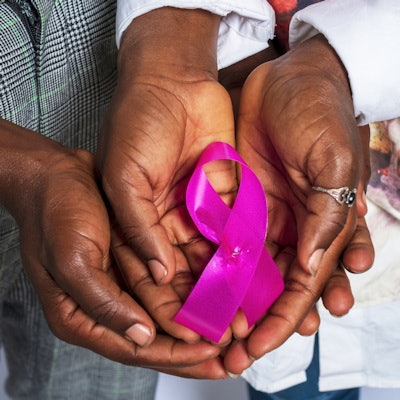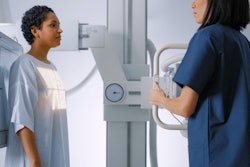
Radiologists are central to mitigating racial and socioeconomic disparities surrounding breast imaging, even as new modalities emerge, according to a keynote speech given May 4 at the American Roentgen Ray Society (ARRS) meeting in New Orleans.
In his presentation, Dr. Jay Parikh from the University of Texas MD Anderson Cancer Center talked about current disparities faced by nonwhite populations, as well as strategies radiologists can employ to provide more care.
"We're in a unique position in radiology to be central in healthcare systems," Parikh said. "Almost every other specialty relies on us to make diagnoses. We're not only on the diagnostic arm, but we're also on the screening arm for almost every conceivable disease right now."
Breast cancer is heterogeneous in how it affects different populations. Factors such as race, age, socioeconomic status, geographic location, and sexual identity play into how breast cancer affects individual patients.
Research suggests that African American women are 40% more likely than non-Hispanic white women to die of breast cancer, and incidence for African American women has been rising since 1980. African American women are also twice as likely to be diagnosed with triple-negative breast cancer and present with larger, higher-grade tumors at a younger age.
Parikh said that while Fortune 500 companies have embraced diversity, healthcare is "a little behind."
"Fortune 500 companies since the '90s ... have been ahead in terms of embracing and catering to diversity," he said. "Healthcare, however, has been relatively slow to acknowledge diversity and cater our care for diverse populations."
However, Parikh added that breast imaging serves as a poster child that reflects national healthcare by being in the whole continuum of breast care.
Barriers to screening access that Parikh listed in his presentation included quality of care, communication gaps, and lack of education. With respect to quality of care, he cited 2018 research suggesting that screening digital breast tomosynthesis (DBT) is used more frequently in patients with private insurance.
When it comes to the communications gap, Parikh pointed to research suggesting that Hispanic patients with limited English proficiency have a lower likelihood of receiving mammograms than non-Hispanic whites. As for the lack of education, studies have shown that African American women with a family history of breast or ovarian cancer are less likely to undergo genetic counseling than white women.
So, how can radiologists help? Parikh said mobile mammography units have been shown to increase compliance in populations, and the service shouldn't be restricted to rural settings. Parikh also said patient navigators help create a culturally and language-concordant system that increases screening attendance rates.
Along with that, educating radiologists on disparities and being culturally respectful can help, which can be done through residency training, continuing education, and beyond.
"I think it's pretty clear for those of us who went through training that we didn't get a lot of training ... about how to deal with cultural competency and humility," he said. "The first step has to be ... to train radiologists, residents, and fellows in terms of cultural competency and humility."
Advocacy is another aspect that plays into how radiologists can approach breast imaging of different populations, Parikh said. This can be localized in breast imaging centers to make improvements in diversity and inclusion, and residents can become knowledgeable of advocacy practices being done by radiologists nationally.
While the future may hold new modalities, they could make way for further disparities. Parikh said newer imaging methods may not be affordable to everyone and that radiologists should adjust accordingly when these times arrive.
"All of this has shown our ability to lead, and as part of the patient care continuum, we have an opportunity to step up once more and help our country in this time we have to address diversity," he concluded.




















